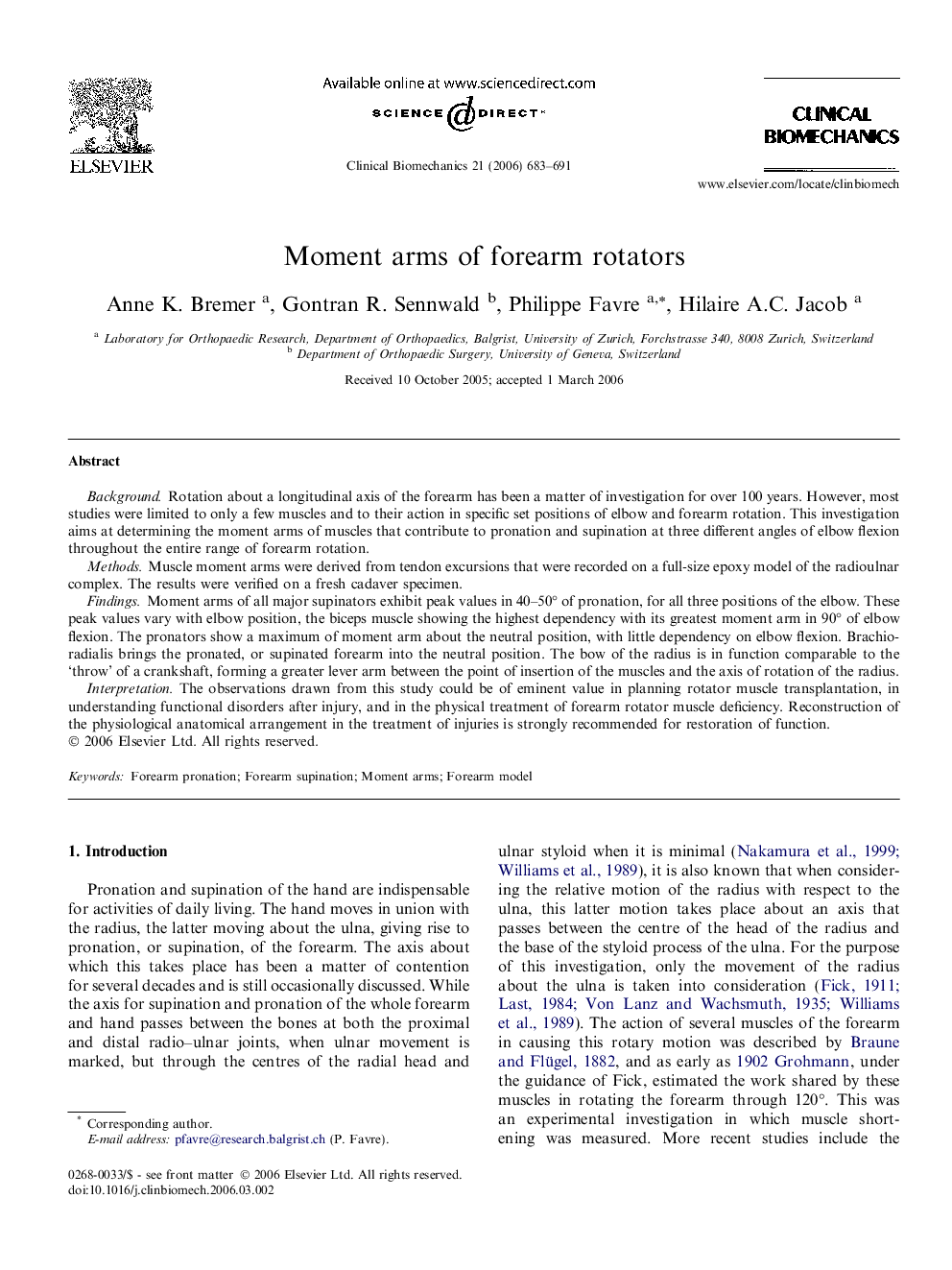| Article ID | Journal | Published Year | Pages | File Type |
|---|---|---|---|---|
| 4051545 | Clinical Biomechanics | 2006 | 9 Pages |
BackgroundRotation about a longitudinal axis of the forearm has been a matter of investigation for over 100 years. However, most studies were limited to only a few muscles and to their action in specific set positions of elbow and forearm rotation. This investigation aims at determining the moment arms of muscles that contribute to pronation and supination at three different angles of elbow flexion throughout the entire range of forearm rotation.MethodsMuscle moment arms were derived from tendon excursions that were recorded on a full-size epoxy model of the radioulnar complex. The results were verified on a fresh cadaver specimen.FindingsMoment arms of all major supinators exhibit peak values in 40–50° of pronation, for all three positions of the elbow. These peak values vary with elbow position, the biceps muscle showing the highest dependency with its greatest moment arm in 90° of elbow flexion. The pronators show a maximum of moment arm about the neutral position, with little dependency on elbow flexion. Brachioradialis brings the pronated, or supinated forearm into the neutral position. The bow of the radius is in function comparable to the ‘throw’ of a crankshaft, forming a greater lever arm between the point of insertion of the muscles and the axis of rotation of the radius.InterpretationThe observations drawn from this study could be of eminent value in planning rotator muscle transplantation, in understanding functional disorders after injury, and in the physical treatment of forearm rotator muscle deficiency. Reconstruction of the physiological anatomical arrangement in the treatment of injuries is strongly recommended for restoration of function.
